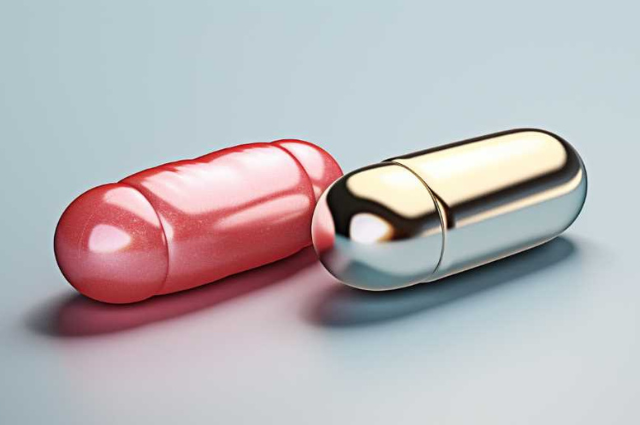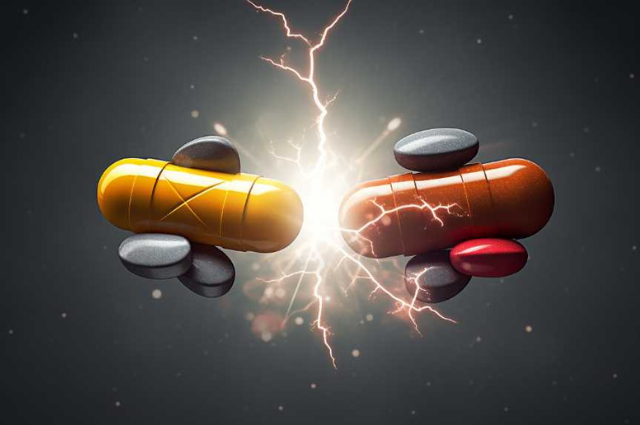What Separates Anabolic Steroids From Corticosteroids?
Anabolic steroids and corticosteroids, while both classified as steroids, serve distinct roles within the realm of medicine.
Anabolic steroids, synthetic variations of the male hormone testosterone, are often associated with muscle growth and performance enhancement.
Conversely, corticosteroids, produced naturally in the adrenal cortex of vertebrates, are commonly utilized for their anti-inflammatory effects in treating various medical conditions.
This discussion will delve into the intrinsic differences between these two classes of steroids, the contexts in which they are typically used, and the potential side effects associated with their use.
Key Takeaways
- Anabolic steroids are synthetic variations of testosterone, while corticosteroids are naturally produced in the adrenal cortex.
- Anabolic steroids are associated with muscle growth and performance enhancement, while corticosteroids are used for their anti-inflammatory effects.
- Anabolic steroids primarily act to build up cellular tissue, particularly in muscles, while corticosteroids act to reduce inflammation throughout the body.
- Anabolic steroids have the potential to cause adverse effects such as cardiovascular disease and liver damage, while corticosteroids have their own set of side effects.
Understanding Steroids: A Brief Overview
Throughout the course of medical history, steroids, a class of organic compounds with diverse physiological effects, have been utilized extensively due to their potent anti-inflammatory and immune-modulating properties. However, it is crucial to differentiate between the two primary types of steroids: anabolic steroids and corticosteroids.
Anabolic steroids, often associated with athletic performance enhancement, are synthetic variations of the male sex hormone, testosterone. These steroids promote muscle and bone growth, and they have the potential to increase physical strength and endurance. Despite their performance-enhancing benefits, anabolic steroids can cause numerous adverse effects, such as cardiovascular disease, liver damage, and psychological disorders when misused.
Conversely, corticosteroids are a class of drugs used to reduce inflammation in the body. They mimic the effects of hormones your body naturally produces in your adrenal glands. Corticosteroids can be prescribed to treat a wide range of health conditions, including asthma, arthritis, lupus, and multiple sclerosis.
While both types of steroids share a common structural framework, their mechanisms of action, uses, and side effects differ significantly. Anabolic steroids primarily act to build up cellular tissue, particularly in muscles, while corticosteroids act to reduce inflammation throughout the body.
The Science Behind Anabolic Steroids
Delving into the science behind anabolic steroids, we begin to uncover the complex biochemical pathways that enable these compounds to enhance muscle growth and physical strength. Anabolic steroids are synthetic versions of testosterone, the primary male sex hormone. They work by binding to androgen receptors within muscle cells, initiating a cascade of events that lead to increased protein synthesis, cell growth, and ultimately, muscle hypertrophy.
The process begins when an anabolic steroid enters a muscle cell and binds to an androgen receptor. This receptor-steroid complex then moves into the nucleus of the cell where it binds to specific DNA sequences, known as hormone response elements. This binding event triggers the transcription of target genes that control the accumulation of contractile proteins in muscle cells. It is this increase in protein synthesis that leads to the characteristic muscle growth seen with anabolic steroid use.
However, the effects of anabolic steroids are not limited to muscle growth. They also impact various metabolic processes, including the regulation of glucose and fat metabolism, and the balance of electrolytes and water. These metabolic effects can contribute to increases in physical strength and endurance, but they also come with potential health risks. Excessive use of anabolic steroids can lead to a range of side effects, from cosmetic changes like acne and hair loss, to more serious complications such as liver damage, cardiovascular disease, and psychological disorders.
Common Uses of Anabolic Steroids
Moving on to the practical applications, anabolic steroids are commonly used in several contexts, ranging from medical treatments to illicit enhancement of athletic performance. While the use of these substances has sparked controversy due to their potential for misuse, an understanding of their legitimate applications is essential in order to form an informed perspective.
The primary uses of anabolic steroids can be broadly categorized into the following:
- Medical Treatments: Anabolic steroids are often prescribed by healthcare professionals to treat a variety of medical conditions. These include muscle wasting diseases, delayed puberty in boys, osteoporosis, and certain types of anemia.
- Performance Enhancement: Athletes and bodybuilders may use anabolic steroids to increase muscle mass and strength, reduce body fat, and improve recovery times. However, this is generally considered unethical and is banned by most sports organizations.
- Body Image Motivation: Some individuals may use anabolic steroids for aesthetic reasons, seeking to enhance their physical appearance by increasing muscle size and definition.
- Counteracting Age-Related Muscle Loss: As people age, they naturally lose muscle mass. Anabolic steroids can help to counteract this effect, potentially improving quality of life for older adults.
- Veterinary Use: Anabolic steroids also have applications in veterinary medicine, helping to promote weight gain and muscle growth in animals.
Potential Side Effects of Anabolic Steroids
While anabolic steroids' benefits are significant in certain areas, their potential side effects pose serious health concerns that warrant careful consideration. The adverse effects can range from mild to severe, temporary to long-term, and may affect multiple organ systems.
In the short-term, users may experience acne, mood swings, fatigue, restlessness, and insomnia. More severe physical implications can include liver damage, kidney problems, and heart disease. These steroids can also influence the hormonal system, causing issues such as testicular shrinkage in men and menstrual irregularities in women. Furthermore, high doses can lead to aggressive behavior and mental health issues such as depression and suicidal thoughts.
Long-term use of anabolic steroids may lead to addiction, characterized by cravings, difficulty in stopping steroid use and withdrawal symptoms. Additionally, the misuse of these drugs can lead to severe psychiatric effects, including mood and personality changes, increased aggression, and paranoid jealousy.
Critically, anabolic steroids also pose significant risks to adolescents. As these drugs can halt bone growth prematurely, resulting in stunted height, they should be strictly avoided by individuals under the age of 21.
The Role of Corticosteroids in Medicine
In the realm of medicine, corticosteroids play an indispensable role in managing a myriad of health conditions. These drugs are synthetically produced, mirroring the function of hormones produced naturally by the adrenal glands. They have potent anti-inflammatory and immunosuppressive properties, making them effective in treating various diseases and conditions.
Corticosteroids are used in several ways in medicine, including:
- Treatment of Autoimmune Diseases: They are often used to suppress the immune system and prevent the body from attacking its own tissues, thereby managing conditions like lupus and multiple sclerosis.
- Management of Allergic Reactions: They can help alleviate severe symptoms of allergies by reducing the body's immune response.
- Asthma Control: Corticosteroids help reduce inflammation in the airways, aiding in the management of chronic asthma.
- Arthritis Treatment: These drugs are used to reduce inflammation and pain in joints affected by arthritis.
- Cancer Therapy: They may be used as part of a treatment plan to reduce inflammation and side effects of cancer treatments.
It's important to note that while corticosteroids can provide significant relief from symptoms, they are not without side effects. Long-term use can lead to complications including osteoporosis, glaucoma, and increased susceptibility to infections. Therefore, their usage must be carefully monitored by medical professionals.
Typical Uses of Corticosteroids
Corticosteroids, a class of potent drugs, are frequently utilized in various medical fields to manage an array of health conditions ranging from autoimmune diseases to allergies. These drugs mimic the effects of hormones your body produces naturally in your adrenal glands, which sit on top of your kidneys. When prescribed in doses that exceed your body's usual levels, corticosteroids suppress inflammation.
In the realm of autoimmune diseases, corticosteroids are beneficial in managing conditions like rheumatoid arthritis, lupus, and multiple sclerosis. They work by suppressing the overactive immune response that causes inflammation and damage to body tissues. In addition, corticosteroids play a significant role in managing allergic reactions. They reduce the inflammatory response to allergens, thus alleviating symptoms like swelling, itching, and redness.
Furthermore, corticosteroids often serve as a critical intervention in severe asthma or chronic obstructive pulmonary disease (COPD), where they help to reduce airway inflammation, making breathing easier. They are also integral in the treatment of inflammatory bowel diseases such as Crohn's disease and ulcerative colitis, where they reduce inflammation and alleviate symptoms like pain and diarrhea.
In the field of dermatology, corticosteroids are used to treat conditions like eczema, psoriasis, and contact dermatitis, minimizing inflammation and reducing itchiness. Additionally, they are employed in the management of severe eye conditions like uveitis and keratitis.
Potential Risks of Corticosteroid Use
Despite their widespread use and significant benefits, the long-term administration of corticosteroids can pose potential risks and side effects. These risks are often associated with high dosages and prolonged use. Although corticosteroids are invaluable in managing many health conditions, the potential risks they present warrant careful consideration and monitoring.
Some of the notable potential risks of corticosteroid use include:
- Osteoporosis: Long-term use of corticosteroids can lead to loss of bone density, increasing the risk of fractures.
- Immunosuppression: Corticosteroids can weaken the immune system, making the patient more susceptible to infections.
- Adrenal Insufficiency: Prolonged use can suppress the body's natural production of cortisol, leading to adrenal insufficiency when the medication is stopped.
- Glaucoma and Cataracts: Corticosteroids can increase intraocular pressure, leading to glaucoma, and can also contribute to the formation of cataracts.
- Mood and Behaviour Changes: Patients may experience mood swings, memory problems, and even psychotic behaviour.
The potential risks of corticosteroid use should not necessarily deter their use, but rather underscore the need for judicious prescription and careful patient monitoring. It is essential to evaluate the benefits and risks on a case-by-case basis, taking into account the patient's overall health status, the severity of the condition being treated, and the potential for alternative therapies.
Key Differences Between Anabolic and Corticosteroids
Over the course of medical history, a key distinction has emerged between anabolic steroids and corticosteroids, both in their structure and their primary applications. The primary difference lies in the physiological effects they induce.
Anabolic steroids, chemically related to testosterone, are designed to mimic its effects on muscle growth and strength. They are often used illegally to enhance physical performance in sports and bodybuilding.
In contrast, corticosteroids are part of the body's response to stress and inflammation. They are used medically to reduce inflammation and suppress the immune system in conditions such as asthma, allergies, and autoimmune disorders.
The structural differences between these two classes of steroids are also significant. Anabolic steroids are synthesized to resemble testosterone, and therefore, are often referred to as androgenic steroids. They act by binding to androgen receptors in the body.
Corticosteroids, on the other hand, are synthesized to mimic cortisol, a naturally occurring hormone in the body secreted by the adrenal glands. They act by binding to glucocorticoid receptors.
Another key difference is in their side effects. Anabolic steroid use can lead to harmful side effects such as heart disease, liver damage, and psychiatric disorders. However, corticosteroids can cause side effects such as weight gain, osteoporosis, and cataracts when used for prolonged periods.
Frequently Asked Questions
What Legal Implications Are There for Using Anabolic Steroids Without a Prescription?
The unauthorized use of anabolic steroids can lead to severe legal consequences. In many jurisdictions, these substances are classified as controlled substances. Possession or distribution without a valid prescription can result in criminal charges, including fines and imprisonment.
Moreover, professional athletes may face additional penalties like suspension or disqualification from sports events. Therefore, it is crucial to use these substances only under medical supervision.
Are There Any Safe Alternatives to Anabolic Steroids for Bodybuilding or Athletic Performance Enhancement?
Yes, there are safe alternatives to anabolic steroids for bodybuilding or athletic performance enhancement.
Natural supplements, such as creatine and protein powders, can aid muscle growth and recovery.
Regular resistance and endurance training, combined with a balanced diet, can also significantly enhance performance.
However, it's important to note that these alternatives require dedication and time, unlike steroids that offer quick but potentially harmful results.
Consulting with a healthcare professional is recommended before starting any supplement regimen.
Can the Body Naturally Produce Both Anabolic Steroids and Corticosteroids?
Yes, the human body naturally produces both anabolic steroids and corticosteroids.
Anabolic steroids, like testosterone, are involved in the growth and repair of tissues, including muscles.
Corticosteroids, on the other hand, are produced in the adrenal glands and serve multiple functions, including regulating inflammation and immune response.
Both types of steroids perform essential roles and imbalances can lead to health complications.
How Does Long-Term Use of Either Anabolic Steroids or Corticosteroids Affect the Body?
Long-term use of anabolic steroids can lead to adverse effects such as heart disease, liver damage, and psychiatric disorders.
On the other hand, prolonged use of corticosteroids may result in osteoporosis, cataracts, elevated blood sugar levels, and suppressed immune function.
Both types of steroids, when used excessively over a long period, can disrupt the body's natural hormonal balance, leading to significant health complications.
Can Anabolic Steroids and Corticosteroids Be Used Together for Any Medical or Physical Conditions?
Anabolic steroids and corticosteroids can be used together in specific medical situations, but it is not commonly recommended due to potential adverse effects. Doctors may prescribe them concurrently for conditions like autoimmune disorders or severe asthma when other treatments fail. The combination may also be used in certain cancer treatments. However, the potential for severe side effects requires careful monitoring.
It's important to note that this should only be done under the supervision of a healthcare professional.
Conclusion
In conclusion, anabolic steroids and corticosteroids serve distinct roles and carry unique risks.
Anabolic steroids, often associated with athletic performance enhancement, can lead to severe health issues.
Corticosteroids, used medically to reduce inflammation and manage autoimmune diseases, may also pose risks with long-term use.
Understanding these differences is crucial for their safe and effective application in both medical and non-medical contexts.







